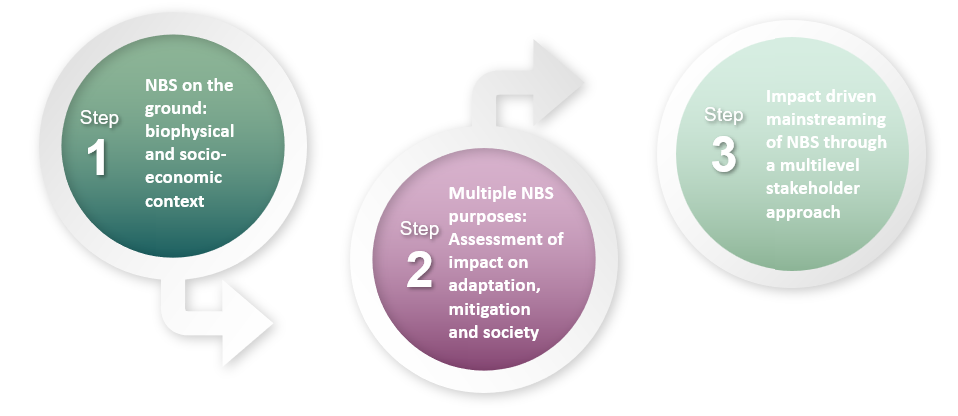The NATALIE Methodology for Climate Resilience
Facing Climate Challenges Head-On
Climate change poses increasingly complex challenges at both urban and regional levels. The rising frequency of extreme weather events: floods, heatwaves, storms and slower onset trends such as sea-level rise, glacier melt, and droughts create compounded risks. These challenges impact regions across Europe, particularly the most vulnerable areas due to geographical location or socioeconomic factors.
To address these growing risks, adaptation and mitigation efforts must prioritize nature as a key solution. Ecosystem-based adaptation, supported by innovative technologies and societal and financial solutions, paves the way for climate-resilient development across regions and communities.
Nature-Based Solutions: The Heart of Our Approach
Nature-Based Solutions (NBS) are increasingly recognized for their ability to mitigate the impacts of climate-related hazards. Highlighted in the EU adaptation strategy, NBS are a cornerstone of systemic adaptation. However, the type of NBS required varies according to the specific bio-geographical challenges of each region. The NATALIE project is committed to transforming, implementing, and testing several NBS across 8 case studies to address these challenges.
Our 6 Levers for Systemic Impact
NATALIE has identified 6 key levers that will drive the ecosystem-based adaptation for climate resilience development. These levers form the foundation of our Innovation Package, specifically designed for regions across diverse bio-geological landscapes in Europe.
- Integrating societal, smart, and financial innovations alongside NBS
- Ensuring long-term stakeholder and citizen engagement for sustained success
- Implementing systemic planning at regional levels to address climate risks
- Enhancing continuous monitoring and evaluation of NBS effectiveness
- Prioritizing NBS in early urban and regional planning stages
- Gathering more evidence on the effectiveness of NBS in the face of future climate risks at both urban and regional levels.
Co-Creating Solutions Through Transformation Labs
At the heart of our methodology lies the integration of local knowledge through our Transformation Labs. These labs bring together local stakeholders to co-create and co-design solutions that are tailored to each case study. This collaborative process ensures that the solutions are not only feasible but embraced by all involved, fostering transformative change and contributing to climate resilience.
NATALIE Booster Pack: 25 Solutions for Climate Resilience
Our Booster Pack offers 25 solutions designed to mainstream the adoption of NBS for climate adaptation at regional and community levels. This Booster Pack is implemented through a three-step process:
Step 1: NBS on the Ground
We utilize the 8 Demonstration Sites (DS) and 4 Follower (FL) as testing grounds to accelerate the development of our solutions. Each of these sites is exposed to key climate change hazards, such as floods, droughts, heatwaves, and wildfires. By testing and refining our solutions in these vulnerable areas, we ensure that our findings can benefit other regions across Europe.
Step 2: Multiple NBS Purposes
Next, we will bring our 6 levers into action to take these opportunities for deep transformative solutions through ecosystem-based adaptation. The transformation labs facilitate co-creation of solutions, supported by monitoring and modeling to track NBS impacts. We also focus on financial tools and social engagement to evaluate the socioeconomic impacts, ensuring alignment with the Paris Agreement target of limiting global temperature rise to 1.5°C.
Step 3: Mainstreaming NBS for Climate Resilience
Finally, by sharing our results and innovative solutions, we promote the mainstream adoption of NBS across Europe. This includes providing valuable insights on how NBS can be effectively implemented and financed to achieve long-term climate resilience at both regional and local levels
